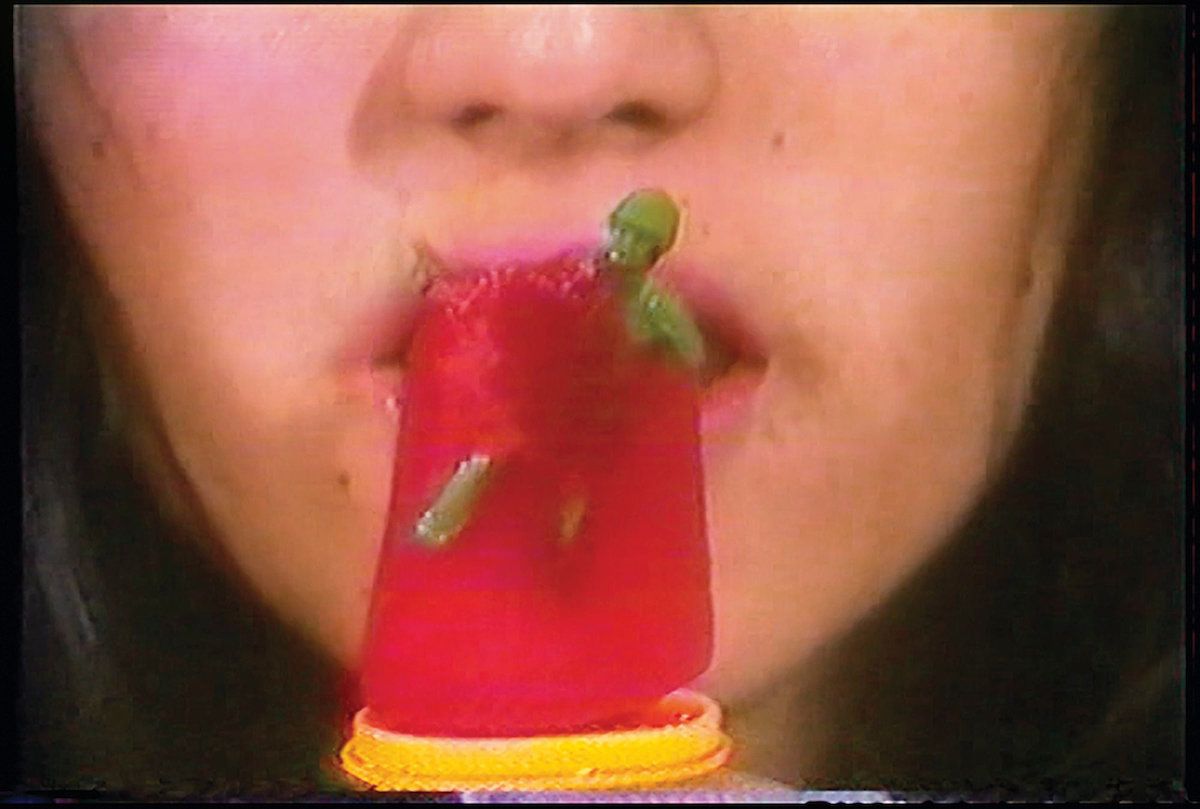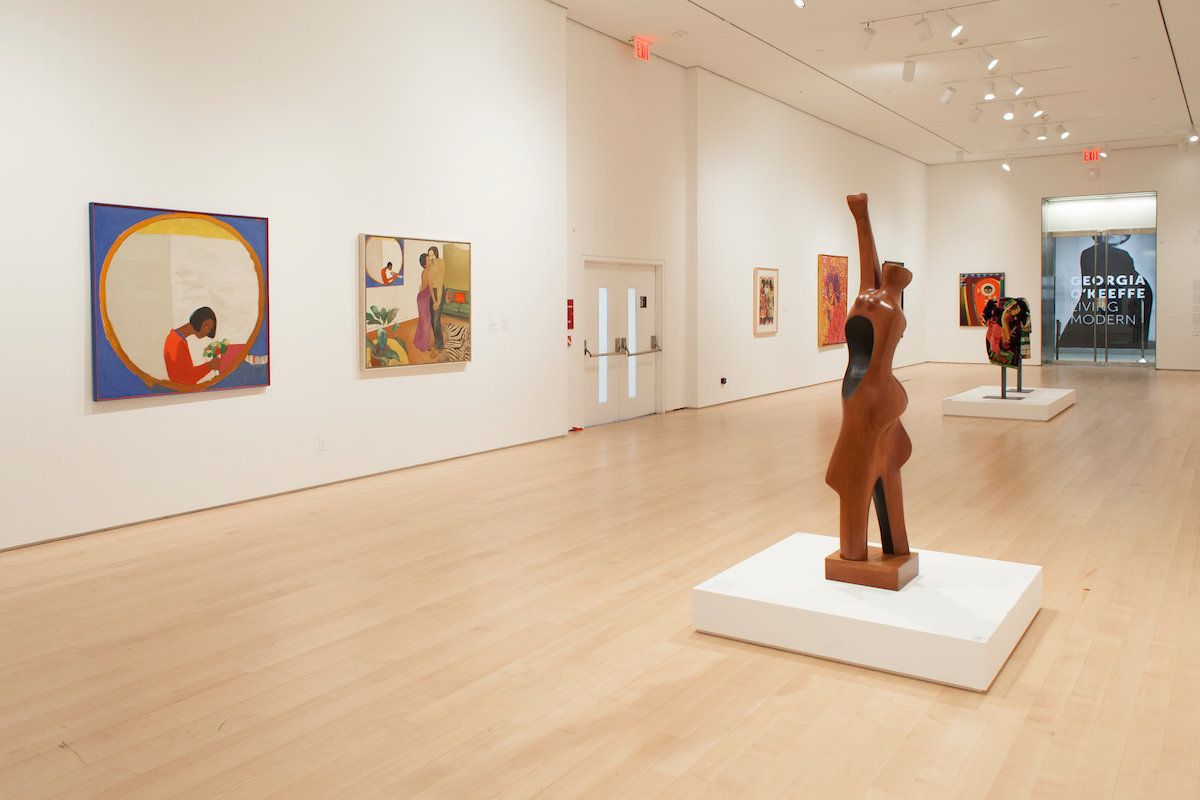Days after the 2016 presidential election, artist Roxanne Jackson impulsively posted a message on Facebook. “Hello female artists/curators! Let’s organize a NASTY WOMEN group show!!!” she wrote, invoking Donald Trump’s by then famous characterization of former Secretary of State Hillary Clinton. “Who’s interested???”
An hour later, more than 300 women had responded, equally frustrated and appalled by the election of an accused sexual predator to the highest office in the country. They responded with such passion and excitement that Jackson and her co-organizer, curator Jessamyn Fiore, agreed they couldn’t turn anyone away from the show. Instead, the two resolved to exhibit all artworks submitted ― requiring only that the works measure under 12 inches in every direction.
“The Nasty Women Art Show” opened in January, with work by 694 artists on view. The artworks were all priced under $100, with proceeds benefiting Planned Parenthood. In three days, the show sold out. It raised $42,500.
The idea quickly spread beyond New York, with sanctioned “Nasty Women” art shows popping up around the world ― in Arizona and Tennessee and Belgium and London. The next show is scheduled for January 2018 in Washington, D.C., on the anniversary of Trump’s inauguration.
The wild success of the “Nasty Women” art shows speaks to the climate of 2017, described by HuffPost’s Emma Gray as “the year women found their rage.” From the Women’s March in January, which New York magazine’s Jerry Saltz dubbed the “best art achievement of 2017,” to Time designating the “Silence Breakers” its person of the year in December, the past 360 or so days have been marked by a kind of collective outcry that’s been impossible to ignore.
But it’s inaccurate to suggest that 2017 alone prompted women to raise hell, as though they hadn’t before. It’s true that many people, particularly white women, were shocked by Trump’s election and what it suggested about our country, and leaped into action in response. Yet for others, particularly women of color, the discrimination and oppression on naked display in the Trumpian era have always been part of the American experience. And people have been protesting it for just as long.
This truth was fiercely demonstrated by two sprawling exhibitions that showcased the radical art of women of color. In April, New York’s Brooklyn Museum opened “We Wanted a Revolution: Black Radical Women 1965-85,” which featured work from 40 artists, including Elizabeth Catlett, Loïs Mailou Jones, Lorraine O’Grady, Howardena Pindell and Faith Ringgold. The exhibition traced the rise of a distinctive African-American, feminist art movement in the 1960s, when artists like Emma Amos, Jae Jarrell and Barbara Jones-Hogu were among the few women represented in black artist circles. It followed the birth of all-women’s collectives like Where We At, which blended artistic practice with fundraising, community outreach, education and political action in 1971.

The exhibition was housed near one of the Brooklyn Museum’s most prized possessions, Judy Chicago’s famous 1970s installation “The Dinner Party.” Chicago’s name is central to most discussions of radical feminist art, while the names of women of color are often pushed to the margins. “We Wanted a Revolution” attempted to give those women, and their work, their due. “Liberation of Aunt Jemima: Cocktail,” for example, reflects artist Betye Saar’s mission to transfigure racist imagery into talismans of power. And “Confessions for Myself,” a 1972 sculpture by Barbara Chase-Riboud, is a towering knot of black patinated bronze with wool cascading gently down ― part metal wreckage, part feminine robe, a visual amalgamation of softness and strength.
The group show highlighted how mainstream feminism in the ’60s and ’70s was a movement composed primarily of ― and made to benefit ― white, middle-class women. The art associated with such a movement, celebrated today in many museums’ permanent collections, was often incompatible with black women’s histories, anxieties and desires. To truly understand the era of activism and art, the show implicitly argued, historians have to look beyond.
“What do black women feel about Women’s Lib?” Toni Morrison wrote in 1971 for The New York Times. “Distrust. It is white, therefore suspect. They look at white women and see them as the enemy ― for they know that racism is not confined to white men, and that there are more white women than men in this country, and that 53 percent of the population sustained an eloquent silence during times of greatest stress.” (It’s not clear what the “53 percent” statistic refers to, but the number is eerily familiar: It’s the same percentage of white women who voted for Donald Trump.)
Five months after “We Wanted a Revolution” opened, Los Angeles’ Hammer Museum debuted “Radical Women: Latin American Art, 1960–1985,” a massive survey of work from more than 100 Latin American women artists from 15 countries. As with “We Wanted a Revolution,” most of the featured artists didn’t identify with feminism, a movement they considered “bourgeois and imperialistic.”
Instead, the artists on view grappled with issues facing women ― maternity, eroticism, domesticity and gender-based violence ― through the lens of their respective countries. Cuban artist Marta María Pérez staged haunting portraits of her pregnant belly threatened by her own knife-wielding hand, a thinly veiled reference to Afro-Cuban superstitions that, along with the rest of her work, places Western myths about motherhood ― as immaculate and peaceful ― in stark relief. Also on view is Chilean artist Gloria Camiruaga’s 1984 film “Popsicles,” which shows her daughters chanting “Hail Mary” while licking ice pops with plastic soldiers in them. The piece considers the idea of childhood innocence against a backdrop of perpetual violence, the reality faced by kids growing up under Chile’s authoritarian military government.

Several other all-women group exhibitions drew attention this year, including “NSFW: Female Gaze” at New York’s Museum of Sex, which focused on erotic work by younger artists, many of whom had never exhibited their work in a museum before. There was also a laundry list of overtly timely shows ― “She Inspires,” “Uprise/Angry Women,” “Secret Garden: The Female Gaze on Erotica” ― on view at New York’s Untitled Space.
But critics praised both “We Wanted a Revolution” and “Radical Women” in particular, lauding them as overdue. Looking back, the shows stand out as two of the most rousing exhibitions of 2017. And they serve as interesting foils to shows like “Nasty Women,” which feature predominately young, white artists, underscoring how women of color have been making urgent, political artwork long before the Trump presidency.
It’s ultimately heartening to see women-centric shows on view at wide-reaching institutions like the Hammer and the Brooklyn Museum, the latter of which dedicated an entire year to feminist programming. Given the archaic gender bias that still permeates the art world ― art by women typically sells for approximately half of what works by male artists fetch at auction ― these efforts are necessary. But they are not enough.
Why? Because women artists account for fewer than a third of solo shows at major museums. And that imbalance has consequences. In a research paper published by Williams College, Paige Wilkinson found that a solo show opportunity at a major museum increases an artist’s auction sale prices, on average, from 7 to 13 percent, while a shot at a group museum show only yields a 1 to 2 percent increase. Likely, this has to do with exposure. A solo show sets one artist apart from the rest, elevating her stature in the process, while a group show lumps artists together, placing them on equal but often impersonal footing. They are grouped together because they are women, because they are black, because they are Latin American, and sometimes not much more.
This kind of categorization, which can feel like siloing, exists outside the world of fine art as well. Earlier this month, musician Caroline Polachek expressed her frustration with the electronic festival Moogfest after she was placed in a lineup of female, trans and gender-nonconforming artists without her approval. “Gender is not a genre,” Polachek tweeted. “I don’t need a sympathy pedestal, esp[ecially] from a male curator. Take my name off this list and put me in the pit with the boys.” Polachek eventually dropped out of the festival altogether, because, she explained on Twitter, “I wanted to break the lane divisions and not be spotlighted for ‘historical underrepresentation.’”

From the Inauguration Day march to “Nasty Women” exhibitions to a late sexual misconduct reckoning, 2017 will be remembered as the year women banded together. The momentum that erupts when women join forces, tell their stories and show their work deserves to be celebrated.
But recognizing the accomplishments of women in groups runs the risk of reinforcing stereotypes that, among other things, cast women as competent collaborators who aren’t ready to stand on their own. For feminist artist collectives in the ’70s and ’80s, embracing “inherently conciliatory and cooperative” behavior provided opportunities for exposure and acclaim, turning a potential weakness into a source of strength. Yet at a certain point, we must challenge these tropes as much as we embrace them to our advantage.
On top of praising “We Wanted a Revolution” and “Radical Women,” critics hailed a slew of solo shows from women artists ― including Carol Rama at the New Museum, Florine Stettheimer at the Jewish Museum and Agnes Martin at the Guggenheim ― most of whom are both white and dead. There were exceptions, including Belkis Ayón at the Fowler Museum and El Museo del Barrio and Toyin Ojih Odutola at the Whitney. But when it comes to emerging and established women artists of color, solo shows are still, disappointingly, deviations from the norm.
Looking ahead, women both within and outside the art world deserve to be recognized more as individuals, as powerful, significant and worthy in and of themselves. All-women group shows are convenient in their ability to address sweeping, historic inequalities. But artists like Pérez, O’Grady, Camiruaga and Pindell deserve the same treatment as their male contemporaries. If women-only art shows stood out in 2017, let’s leave them there. Let’s look forward to bigger and better, more radical and revolutionary work in 2018.
